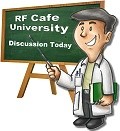Voxel Searching
|
|
1 | 2 | 3 | 4 | 5 | 6 | 7 | 8 | 9 | 10 | 11 | 12 | 13 | 14 | 15 | 16 | 17 | 18 | 19 | 20 | 21 | 22 | 23 | 24 | 25 | 26 | 27 | 28 | 29 | 30 | 31 | 32 | 33 | 34 | 35 | 36 | 37
Voxel Searching Voxels are the way of the future for search engines designed to mine for 3-dimensional objects across the web. Car parts, furniture, art collection object, or just about anything represented by a 3-D vector file format. Researchers at Purdue University have created a method whereby inputting a 3-dimensional sketch of, say, a football, will result in files containing objects that have a shape close to that of a football. For the system to work, cooperative users must make the 3-D files available for searching. The most likely early adopters will be manufacturers and distributors with inventories of solid parts, like aircraft, automotive, appliance, tool, plumbing, and furniture products. Once a standard is defined, a whole new dimension (pun intended) of resources will be available to folks looking for parts that can be described by what will become a simple 3-D sketching interface. Today's search engines perform what can loosely be described as a 1- or 2-dimensional search for images. Even so, the image pixels themselves are not actually scanned for content, but relies on file names and descriptive "Alt" text to clue in the search engine. That is where the voxel comes in. Whereas a pixel represents a color and a location in an image, a voxel represents a volume (hence the "V" in voxel) at a given point in the solid object. Since both the presence and absence of material is represented, a 3-D search engine can tell the difference between a disk with rounded edges and a toroid that is basically the same shape, only with a hole in the middle. Thomas Funkhouser, a Princeton University professor, has put a 3-D search engine (sketch applet by Takeo Igarashi) on the Web that lets the user sketch an object using a computer mouse, add a text description, then search for similar models in design databases. Once there, click on the Text & 3-D Sketch link, and play around with the application. I sketched a hollow bowl and it found bowls and pots without entering any text keywords - amazing. |
 "
"